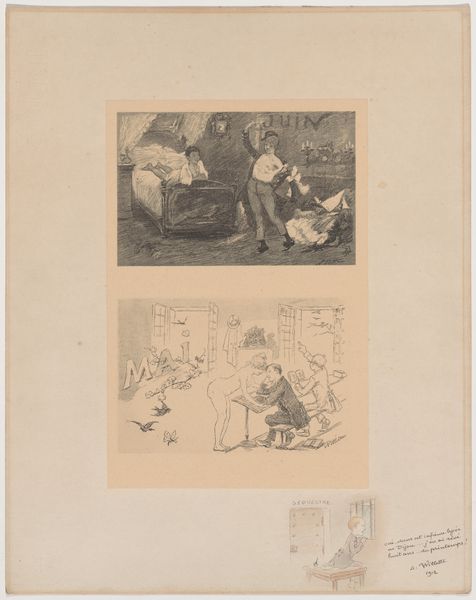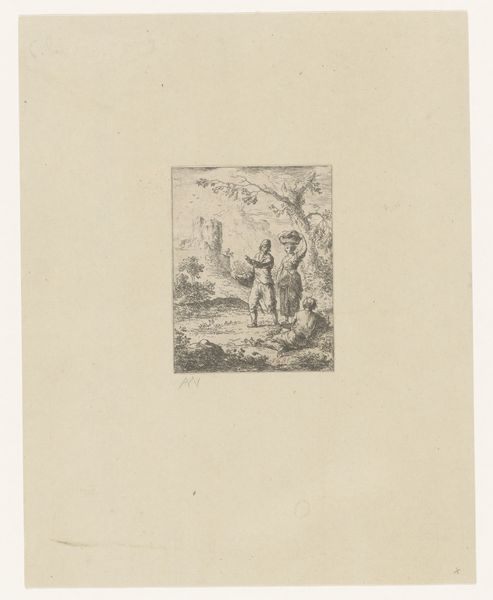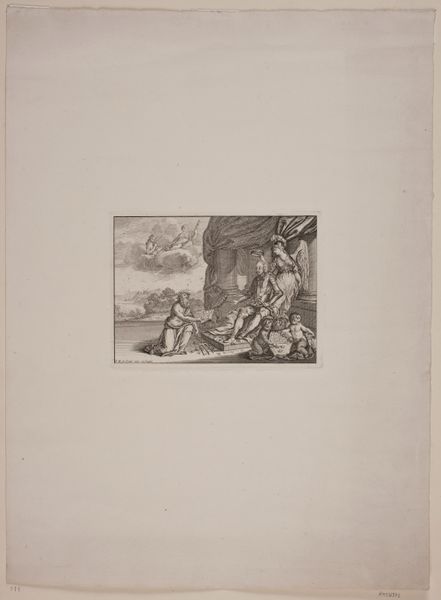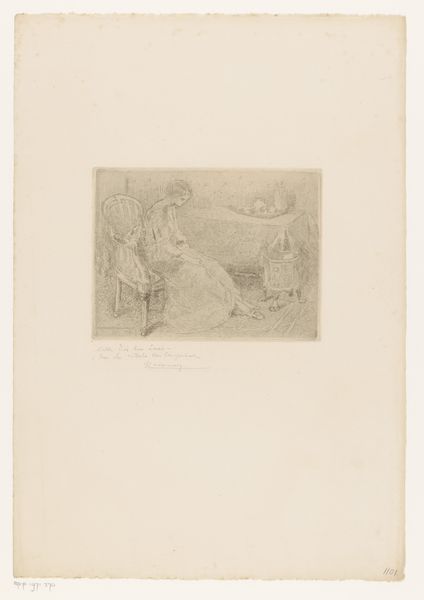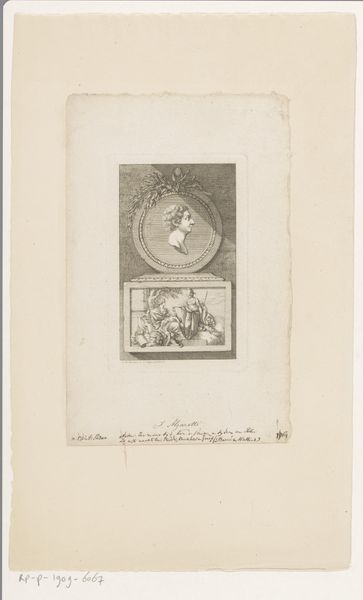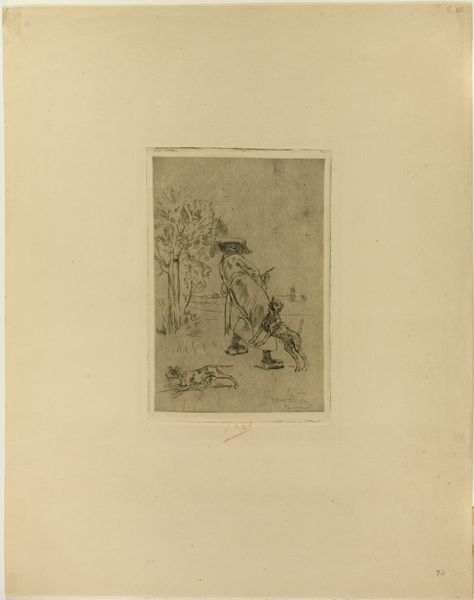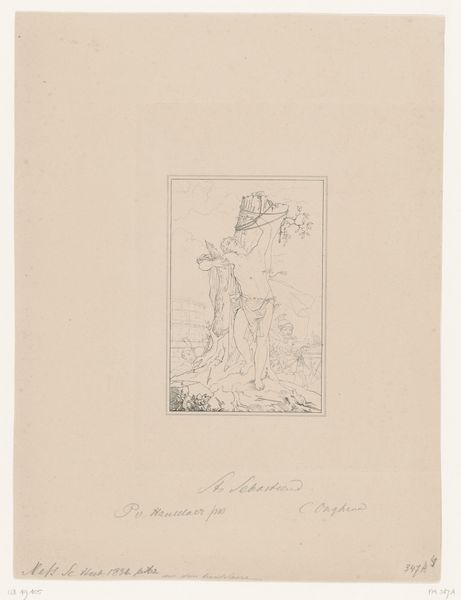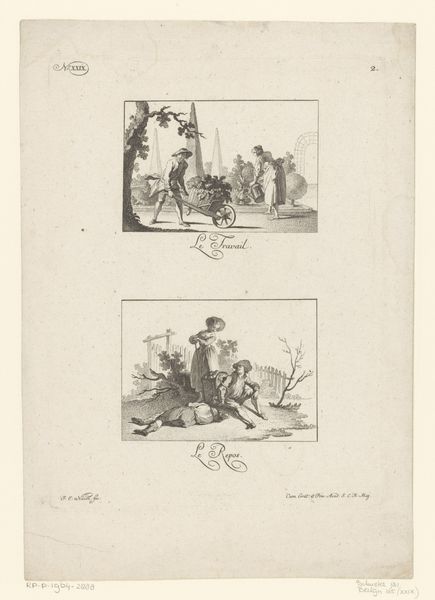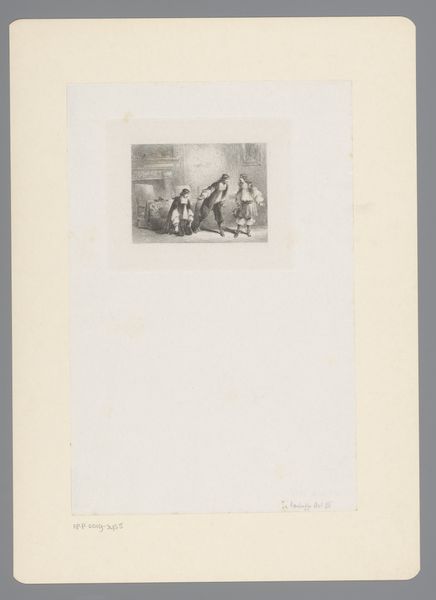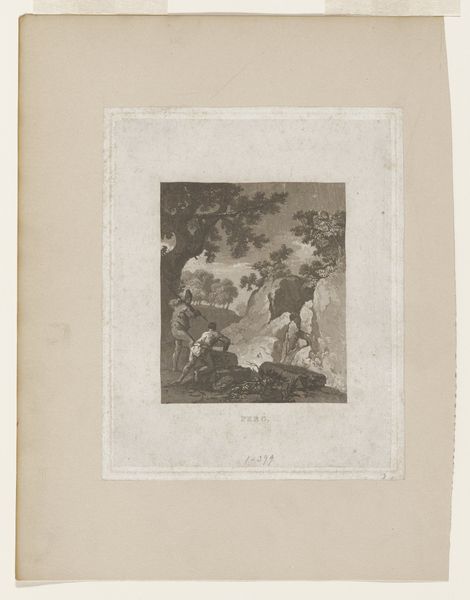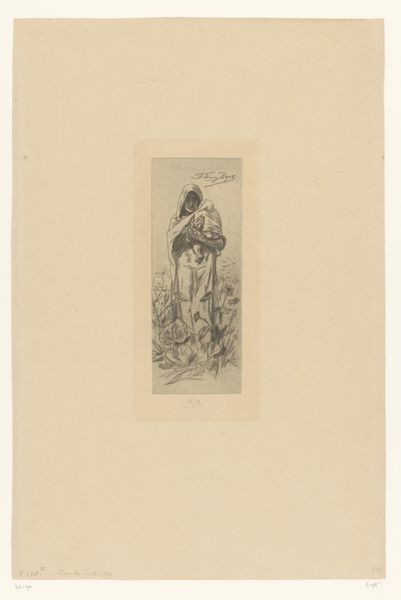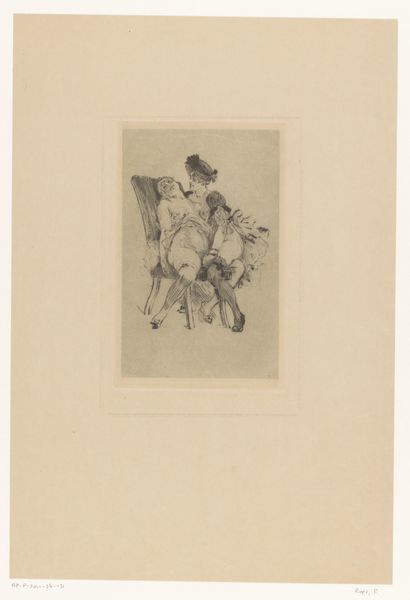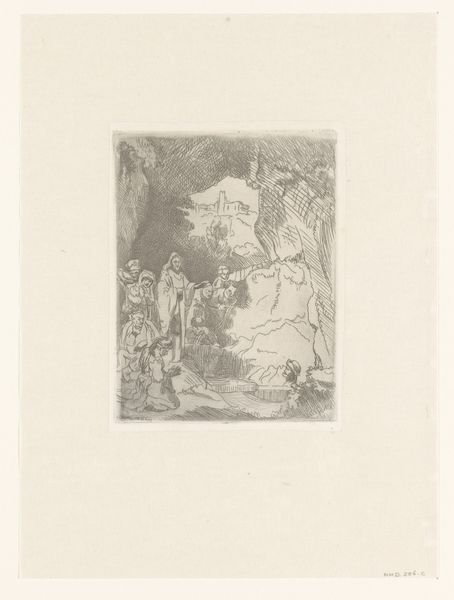
Hein! Pas très blancs tes dessous... (Hmm! Your Underwear Isn't Very White) 1912
0:00
0:00
Dimensions: image (drawing): 11.43 × 12.7 cm (4 1/2 × 5 in.) image (print): 29.53 × 25.4 cm (11 5/8 × 10 in.) mount: 57.79 × 45.72 cm (22 3/4 × 18 in.)
Copyright: National Gallery of Art: CC0 1.0
Editor: This is "Hein! Pas très blancs tes dessous..." by Adolphe Léon Willette, created in 1912 using pen, watercolor and pencil on paper. It’s a comical scene; it’s almost vaudevillian! What social commentary do you glean from the artist's chosen materials and presentation? Curator: From a materialist perspective, the choice of pen, watercolor, and paper, combined with the suggestive title, points towards a critique of superficial appearances within the Parisian society of the time. Editor: How so? Curator: The seeming flimsiness of the materials juxtaposes sharply with the provocative subject. Pen and watercolor, often associated with quick sketches or illustrative work, elevate a potentially scandalous moment to something perhaps seen as commonplace. This tension mirrors how appearances can mask underlying realities. What does the text itself, literally scrawled on the artwork, suggest? Editor: I didn’t even notice it initially, it’s almost incorporated into the work as an after-thought. Is the artist highlighting the behind-the-scenes labor involved in constructing social facades, playing with what is seen versus unseen? Curator: Exactly! The deliberately chosen low art materials combined with a caricature of upper-class amusement creates tension that reveals something crucial about society. The making, the materials, they challenge the illusion of effortless elegance, which seems entirely the artist’s intention. Editor: So, looking at this drawing as an artifact reflecting social production and consumption offers more insight than just viewing it as a mere comical illustration? I hadn't considered that. Thanks! Curator: Indeed. The piece is less about aesthetic beauty, and more about deconstructing the fabrication of appearances within a specific social stratum.
Comments
No comments
Be the first to comment and join the conversation on the ultimate creative platform.
